Stretchable UV Curing Resin"STRTECH"(Developed products)
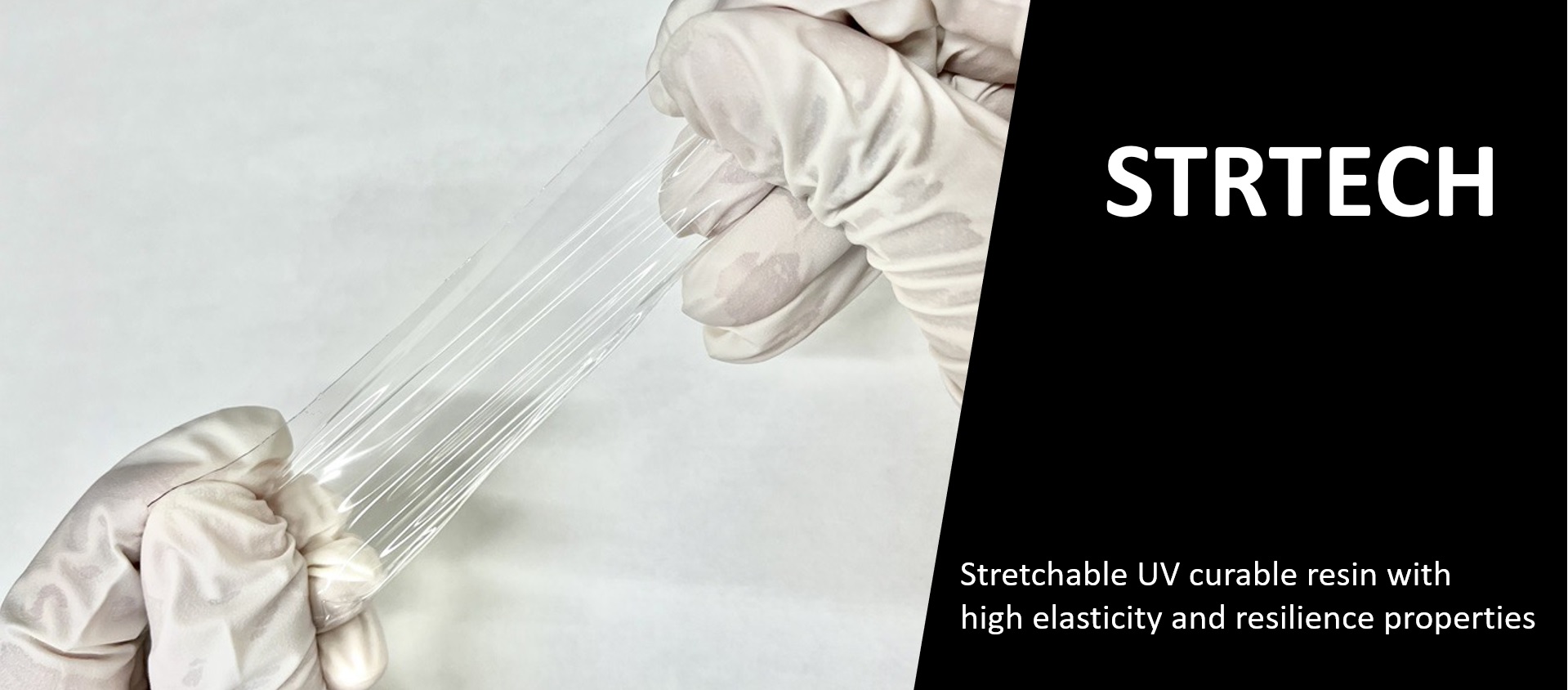
Stretchable UV-curable resin for electronics with excellent resilience properties
What is Great about Sanyo Chemical's Stretchable UV-curable Resin ”STRTECH“
1
UV curable resin with high elasticity and resilience properties
Traditionally, because UV-curable resins are often brittle and hard, thermosetting and thermoplastic elastic materials such as silicone and urethane resins have been mainly used for such flexible wearable devices. However, it is usually difficult to achieve both elasticity and resilience (the property of returning to the original shape after deformation), and when conventional elastic materials are tried to be elastic enough to follow the movement of skin and joints, there is a delay in restoration or the material does not return to its original shape after repeated use.
“STRTECH” is a new material that is a UV curable resin, yet it is soft, flexible, and freely stretchable, and has high resilience properties that allow it to return to its original shape even after repeated expansion and contraction. Since it can follow complex movements, it is expected to be applied to flexible wearable devices that can follow the body's movements and be worn on the skin without discomfort.
UV curable resin with high resilience properties
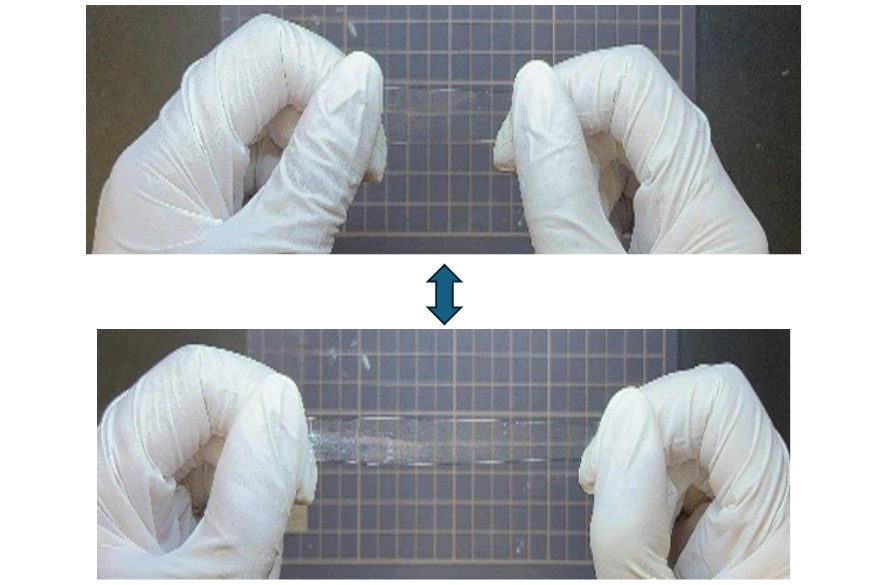
Resilience: 99% or more restored even after 50% elongation
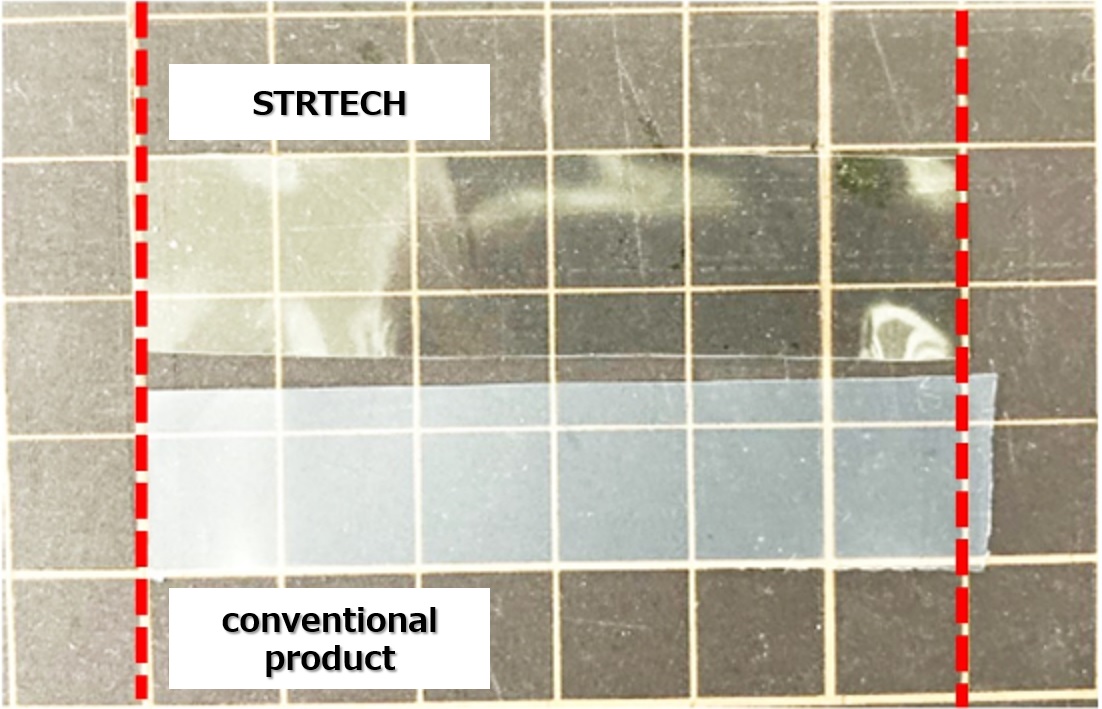
2
High adhesion to metal, glass, etc.
“STRTECH” has excellent adhesion to metals such as copper and silver, and is expected to be used for encapsulants for circuit boards and sensors, as well as for film substrates*.
*Flexible wearable devices use flexible and stretchable thin film as a substrate for circuits and other devices.
3
Adaptable to various printing methods such as IJ and screen printing
“STRTECH” can be customized in viscosity and other properties ranging from liquid to film, and is applicable to various processes such as coating and printed wiring formation.
In addition, since it is UV curable, it can be cured in a shorter time than thermosetting, and heating, drying, and other processes are not required, making it possible to shorten the production process. In addition, since no heating is required, it is useful for reducing CO2 emissions, thus contributing to carbon neutrality. In addition, the use of thermosensitive materials and heat-sensitive organic materials can be used without requiring high heat for curing, thereby expanding the range of material choices.
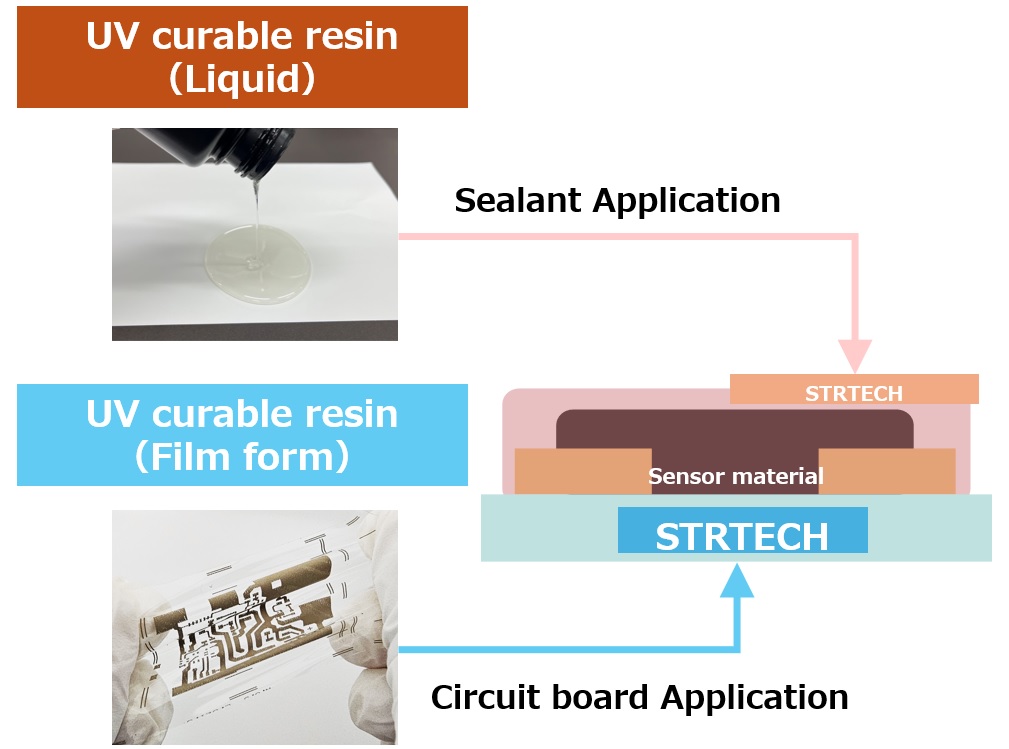
」
Comparison
| STRTECH | TPU | Silicone | |
|---|---|---|---|
| Processability | Excellent | Poor | Poor |
| Flexibility | Good | Fair | Good |
| Heat resistance | Good | Poor | Good |
| Adhesion | Good | Good | Poor |
Application Example of “STRTECH” to Stretchable Sensors
(Joint research with Tokito Laboratory, Yamagata University)
Through joint research with a research group led by Professor Tokito of Yamagata University (Organic Electronics Research Center), a leading researcher in flexible printed electronics, we have confirmed the effect of restorative properties when “STRTECH” film is used for strain sensors. Furthermore, using “STRTECH” as an encapsulant for sensors, we have also confirmed that the resistance waveform does not change before and after encapsulation.
Study of application to sensor substrate materials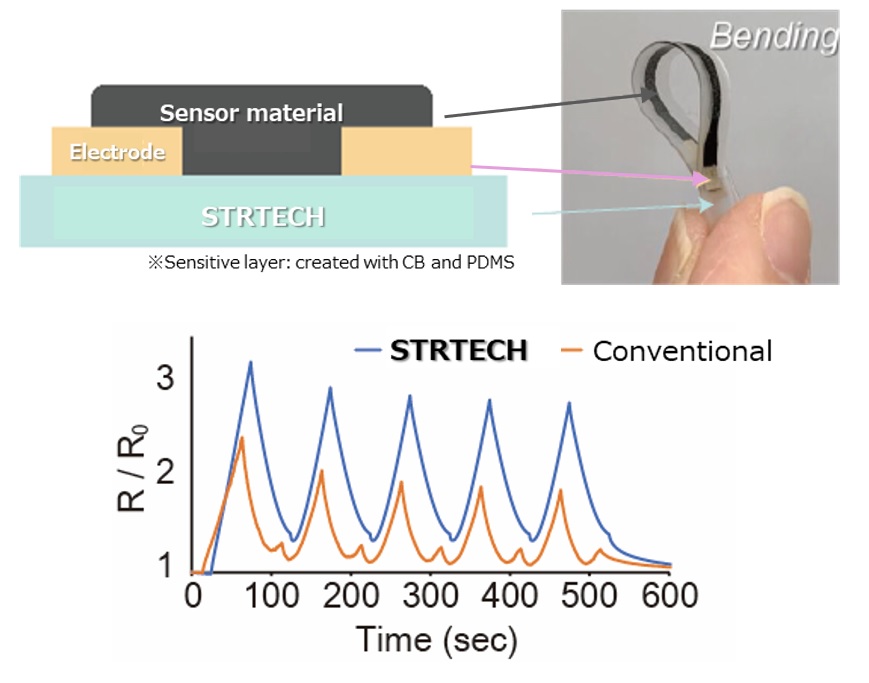
Figure1:Resistance vs. Bending time
Higher response to deformation than conventional products
Test method: The conductivity-sensitive layer* printed on the film substrate is subjected to expansion and contraction, resulting in a change in resistivity, and the degree of strain is detected.
※Made of carbon black (CB) and polydimethylsiloxane (PDMS)
Test conditions: The sensor was pulled at a strain range of 50% and a tensile speed of 0.2 mm/sec, and the change in resistance over time was measured.
Study of application to sensor encapsulation materials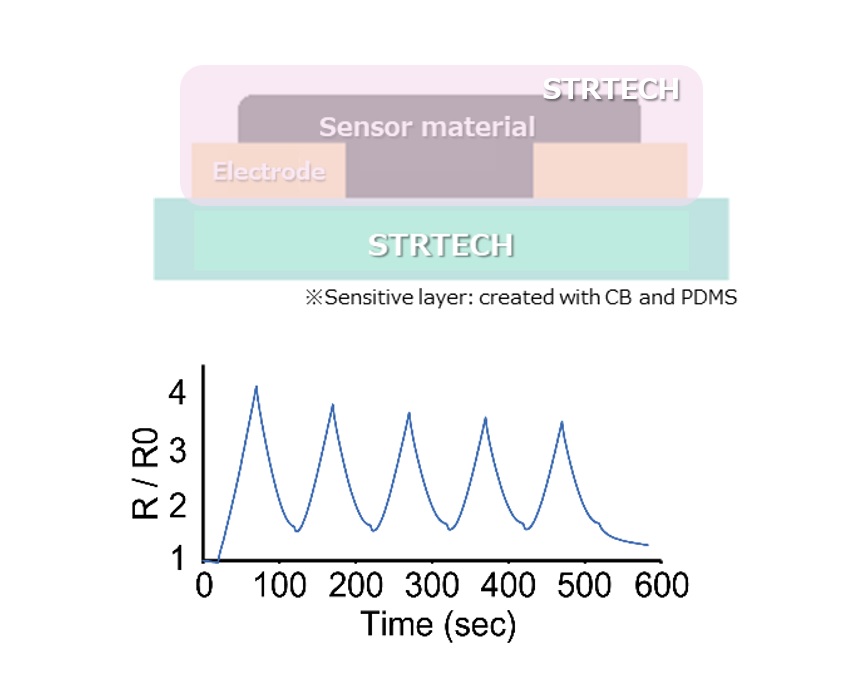
Figure2:Resistance vs. Bending time
No change in sensor characteristics when subjected to strain
Test conditions: The sensor was pulled at a strain range of 50% and a tensile speed of 0.2 mm/sec, and the change in resistance over time was measured.
■ FHE substrate encapsulation study
・Protects wiring and chips by following the deformation of the board.
・Does not affect sensor characteristics even after encapsulation.

Fig. Cross-sectional view of FHE-type strain sensor and actual
Physical Properties of “STRTECH” Products
| Grade | STRTECH ST-101 |
STRTECH ST-201NA |
STRTECH ST-202NA |
||
|---|---|---|---|---|---|
| Liquid | Viscosity [mPa・s] | 22 | 1,900 | 12,000 | |
| After curation | Optical | Transmission [%] | >95 | No data | No data |
| Physical properties | Elastic modulus [MPa] | 62 | < 10 | < 10 | |
| Elongation at break [%] | 180 | 400 | 480 | ||
| Recovery rate [%] | >99 | >99 | >99 | ||
| Heat resistance | Dimensional change rate [%] 150℃, 1h |
No data | < 1 | < 1 | |
| Other | Adhesion on metal | 100/100 | No data | No data | |
Measurement condition
-Viscosity: Type E viscometer (25°C)
-Transmittance: film thickness of approx. 10 μm, measured with a haze meter
-Modulus of elasticity and elongation at break: Samples were prepared in strips (40 mm x 15 mm x 0.1 mmt) and measured at a distance of 20 mm between chucks and at a tensile speed of 10 mm/min.
-Recovery rate: Measure the dimensional change before and after the test after the cured material with a film thickness of approximately 200 μm is elongated by 50% and recovered.
-Dimensional change rate: Dimensional change before and after heating is measured with an optical microscope.
-Metal adhesion: Measured with 100 mask loss cut on a copper plate coated with approx. 10 μm-thick resin.
(Curing conditions: D bulb 4000 mJ (1000 mW/cm2), under nitrogen atmosphere)
Related Information
Related Products
-
UV Curing Resin
This page has been prepared solely for information purposes.
Sanyo Chemical Industries, Ltd. extends no warranties and makes no representations as to the accuracy or completeness of the information contained herein, and assumes no responsibility regarding the suitability of this information for any intended purposes or for any consequences of using this information.
Any product information in this brochure is without obligation and commitment, and is subject to change at any time without prior notice.
Consequently anyone acting on information contained in this brochure does so entirely at his/her own risk.In particular, final determination of suitability of any material described in this brochure, including patent liability for intended applications, is the sole responsibility of the user. Such materials may present unknown health hazards and should be used with caution. Although certain hazards may be described in this brochure, Sanyo Chemical Industries, Ltd. cannot guarantee that these are the only hazards that exist





